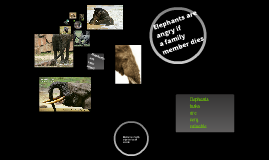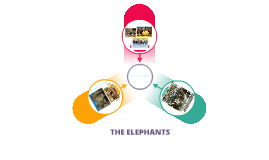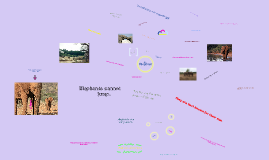Elephant
Transcript: Abiotic Factors- Temperature, Soil, Water, and Weather. These are the abiotic factors for an Elephant.The population is 470,000-690,000. Biotic Factors- Plants, Vegitation, Other animals and ,insects. Humans are also interfering with there natural habitat so they also can be considered as a factor.There predators are humans that are poachers and bengal tigers. "African Elephant."National Geographic. National Geographic, n.d. web.17 Dec. 2012 African Elephants are the largest land animals on earth, and are slightly larger than there Asian cousins. The African Elephant can be identified by there ears that look somewhat like Africa. The African Elephant. African Elephants are the most facinaing animals and complex , this animals is intelligent, emotional, and sensitive for a large and massive mammal. The five structures of an Elephant are its trunk that is used for its daily life to help the mammal get food, water, shelter, and clean its self with its trunk. The Elephant also has its tusks to help it defend itself from predators . The skin on an Elephant helps hold together their mass. There ears help it by radiating heat to help these animals cool , sometimes the Elephants heat is to much though.Feet help them for sinking in mud. "Afrizim." African Elephant Facts Information. N.p., n.d. Web. 17 Dec. 2012 Abiotic Factors/Biotic factors Pictures By Logan Chappell African Elephants inhabit a diverse array of habitats including tropical forests ,savannas, grass lands, and woodlands. ''Elephant Habitat." Elephant Habitat. N.p., n.d. Web. 17 Dec. 2012. Shinde, Girija. "Elephant Habitat." Buzzle.com. Buzzle.com, 19 June 2012. Web. 17 Dec. 2012. Elephant Five Structures Habitat Fun Facts Bibliography scientific name - Loxodonta africana

















